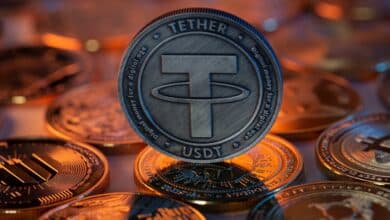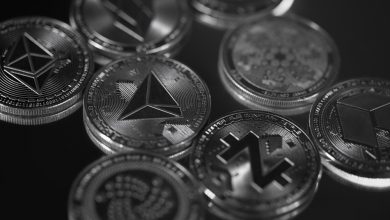Stagflation – What Is It And How Does It Affect Crypto Markets?

Over several years, economic experts believed that stagflation was impossible because of the dominance of economic laws. The phrase firstly appeared during the recession of 1973-1975. The convergence of increasing living costs and slow economic growth gives rise to stagflation. This situation causes a condition of unemployment and inflation in the region.
Stagflation creates a complicated situation for economic policymakers as it becomes difficult for them to manage the economy. In this guide article, we will explore the concept of stagflation and the problems that arise with it. Moreover, we will also understand the phenomenon of economic stagnation and inflation and their social and economic impacts on the cryptocurrency market and the region.
What is Economic Stagnation?
A situation where the economy experiences almost negligible growth is known as economic stagnation. Stagnation in the economy is caused by annual growth below 2%. In addition, an increased rate of part-time employment, a high unemployment ratio, and decreased economic output also give rise to economic stagnation.
The tenure of economic stagnation may vary depending upon the overall economic growth. It may occur in the short term if the economy gets boosted by taking specific steps; however, it may last longer in some conditions. Some particular industries may face economic stagnation due to poor economic growth.
Usually, during economic stagflation, the stock markets suffer the most, and the worker’s wages are not increased. No matter how advanced an economy is, it still can face the stagnation phenomenon.
There can be various reasons for economic stagnation; however, an economic shock may be a major one. The economic output of a region may stagnate due to any natural disaster, shortages in the supply chain, a result of war, etc., thus making the economy suffer.
What is Inflation?
The reduction in the purchasing power of any entity is referred to as inflation in economic terms. It is when the prices of goods and services increase in the market, and now consumers need more money to purchase them. Therefore, the currencies lose their purchasing power when inflation prevails.
One can determine the impact of price fluctuations on services and goods during inflation. These entities may include food, energy, commodities, healthcare, entertainment, labor, etc. As a result of inflation, the rate of disposable income also falls.
Therefore, as the living expense increase for a significant percentage of the population, the economic growth of that region declines. Moreover, when the rise in money supply surpasses the economic development of a geographical area, inflation may occur for a longer span.
Types of Inflation
Inflation has several negative impacts on people, especially investors and business owners. Inflation usually causes a price hike for different assets such as commodities, real estate, stocks, etc. The three common types of inflation determined by economic experts are mentioned below.
Demand-Pull Inflation: Whenever upward pressure is exerted on the prices due to a shortage in the supply of goods or services, it creates a situation of demand-pull inflation.
Cost-Push Inflation: When wages and raw materials are increased, it ultimately increases the prices of vital commodities and services. As a result, the economic output decreases as the cost of production increases.
Built-In Inflation: To meet the cost of living, the demand for wages increases in the market, causing built-in inflation. Due to this condition, the companies raise the prices of goods and services, which leads to inflation.
What is Stagflation?
In parallel to economic stagnation, there may exist another phenomenon known as stagflation. Although it is a rare situation, stagflation may occur when the prices surpass the high economic output. Whenever the needs of the public are not fulfilled by the economy’s growth. When the inflation rate hikes and the development of the economy seizes, stagnation happens
However, as all these circumstances may not coincide, stagnation may be considered contradictory. However, this may also give birth to unemployment as economic growth slows down. The companies may start selling all their products as the prices continue to increase. This may lead to an even higher unemployment rate as the public’s demand for goods and services declines due to increased costs.
Stagflation can be referred to as the convergence of economic stagnation and inflation. The individuals surviving in such inflationary situations cannot predict anything about the capital they would be able to spend in the coming times. As no one has an idea about the future income rate, it makes it difficult for people to spend and invest their money anywhere. This then creates an uncertain situation and leads to slower growth.
In the 190s, the world experienced one of the significant phenomena of stagflation. Due to the fuel shortages worldwide, some considerable world economies declined and experienced high inflation rates, increased unemployment, and slower economic growth.
In addition, during that period, when the United States decoupled its local dollar from the standard gold, it also led to stagflation. Therefore, fiscal and monetary policy disturbance may also cause stagflation in some regions.
History of Stagflation
Over several years, the notion prevailed that stagflation is impossible, mainly determined by the economic models existing in policy and academic circles. However, after the Great Depression and the concept of Keynesian economics, experts started thinking about this concept too.
They deduced that inflation has remained persistent over the past many years, and the measures to suppress inflation result in increased unemployment. On the other hand, if one tries to overcome unemployment, it increases inflationary pressure.
Causes Of Stagflation
When the cost of living exceeds the public’s demand for goods and services, it births the stagflation phenomenon. Moreover, the decrease in the gross domestic product (GDP) may also be one of the reasons. There are multiple other causes of stagflation, some of which are mentioned below.
- Supply Shocks
When there is no significant change in the combined demand for a product or the total reserves of a company, and still the prices continue to go up, the situation is known as a supply shock. Sometimes, human activities may be responsible for such shocks. It can be understood by an example that in case of a conflict between any two countries, it may result in an increase in the price of oil or any other raw material needed for the production of any entity.
In addition, any natural calamity may also lead to a supply shock. This causes the prices of goods and commodities to increase ultimately.
- Monetary Policy Errors
The management of the money supply of any county by the central banks is known as monetary policy. The wrong decisions or problems during management may lead to stagflation. When the interest rates are lower, the banks may increase the vulnerability of cash for lending. This will increase the inflationary pressure on the prices and wages of the consumers, thus declining the interest rates.
For example, the devaluation of the dollar during the Nixon shock resulted in the freezing of wages and costs of commodities and, thus, stagflation. On the other hand, if economic activity is going down and interest rates are increasing, stagflation may still be caused.
- Demand-Pull Theory
When the supply of goods and services decreases due to any fluctuation in production, it leads to a demand-pull situation. The shortage in the supply of raw materials or products, and experts believe that only monetary shocks can cause this kind of inflation. When any governing body or a higher authority imposes tight restrictions over a state’s economic policies, such as decreasing the supply of money or increasing federal rates, stagflation may be caused.
- Cost-Push Theory
According to this theory, an increase in the prices of raw materials or wages may cause stagflation. The reduction in the profit margin for the enterprises may result in unemployment and, thus, increased costs. This ultimately leads to a decline in economic growth. In this situation, the primary driver of stagflation is the increased prices of products to be supplied; therefore, labor shortage, wage increase, or tariffs can all cause an impact.
- Differential Accumulation
This theory explains that the unification of two parties and purchasing power are correlated to each other and, similarly, stagflation and globalization. The combination of any two entities of parties leads to the concentration of control in the hands of very few people who can control the supply of commodities and, thus, the revenue, which increases the risk of stagflation.
Effect of Stagflation on Cryptocurrency Markets
It’s not long since cryptocurrencies came into being; therefore, not much information is available regarding crypto trading during stagflation. However, one can analyze the behavior of the crypto market during stagflation to decide whether it is a good option. Generally, it has been observed that stagflation does not have a good impact on traditional markets.
As there is a significant connection between general indexes and crypto markets, which are generally operated through crypto algorithms, any negative sentiment may have a long-lasting impact on cryptocurrencies. Usually, the customers who store their savings in traditional currencies can easily survive such uncertain situations than the ones who deal with crypto assets and their volatile nature.
Therefore, the demand for crypto assets may decline during periods of stagflation. Moreover, retail traders also became least interested in trading cryptocurrencies during this time. This is considered a risky investment because the money the customers have to purchase cryptocurrency is also affected by high inflation.
However, there is still a possibility that the customers choose to invest in crypto assets instead of traditional ones depending on their investing strategy. A blockchain network is used to handle these cryptocurrencies, and they are not integrated into the monetary policy of any governing body like the traditional ones.
Suppose a country is facing high inflationary situations while the other is not. In that case, the traders dealing with crypto can still earn revenue with their crypto investments even though their local currency is losing its purchasing power due to inflation.
In certain countries such as Argentina or Venezuela etc., where the residents face hyperinflationary conditions from time to time, investors usually look for investments from where they can earn more capital and protect their savings from stagflation. The situation in which the prices of essential goods and services increase speedily and in an uncontrolled manner is known as hyperinflation.
In such conditions, trading in crypto assets is a better option as they protect the traders from hyperinflationary pressure and provide them with an alternate means to pay during stagflation. Therefore, the investors may redirect a percentage of their savings in the form of Bitcoin to overcome the hyperinflationary circumstances.
Impact of Stagflation on Bitcoin
As the conditions of high inflation and lower economic growth move parallel to stagflation conditions, one can consider Bitcoin as a barrier against them and a risky investment, too, as the price of the currency may fluctuate in the market during economic uncertainty. In crypto, Bitcoin can be considered the same barrier against inflation as gold in traditional markets.
Therefore, Bitcoin can protect traders naturally during inflation. First, as Bitcoin is a decentralized entity and not controlled by any central authority, it can be conveniently used as a means of payment globally. As a result, the currency is not impacted by any monetary policy or potential corruption charges imposed by any government.
Moreover, Bitcoin is not an abundant crypto asset; the number of Bitcoins circulating in the market halves every four years. The maximum limit of Bitcoins that can circulate in the market or undergo inflation at a time is just twenty-one million. This situation that arises from a limited number of Bitcoin or their scarcity in the market is also known as a store of value or digital gold.
Usually, whenever interest rates increase in the market, the worth of investments involving risks declines. As there is a significant relationship between stock markets and crypto assets, the price drop will have a noticeable impact. This correlation can only be broken by Bitcoin; however, the process requires some time and must be controlled by a responsible organization.
The adoption of cryptocurrency and particularly Bitcoin, can be catalyzed by the stagflation situation. In case, it becomes clear in front of the people that the traditional economy they rely on is unsustainable. During uncertainty, Bitcoin can prove as a more substantial fence against the failing economic system of a country.
However, this then results in an increase in the adoption and prices of cryptocurrency. There is a hope that a milestone may be achieved when people rely on cryptocurrencies more than the existing economic system.
How to Tackle Stagflation
Different kinds of fiscal and monetary policies can be implemented by the governing bodies in order to provide a hedge against stagflation and to increase economic growth. Cryptocurrencies can be considered as an in-built tool against it. Here are some recommendations that can help traders fight such situations.
- Fiscal Policy
The overall demand can be increased by decreasing the tax ratio or increasing government spending. This can be done by implementing a comprehensive fiscal policy to boost economic growth. Moreover, inflation can be slowed down if expenses are cut by the higher authorities, which will then decrease the demand for goods and services in return.
- Monetary Policy
Implementing a sound monetary policy is another tool. It is done by manipulating interest rates to boost the current economy. The central banks reduce the cost of borrowed money via lower interest rates. Moreover, the interest policy can also decrease the amount of money circulating in the market, which then reduces the money supply. As a result, the economy starts growing better with time.
- Reduction in Unemployment
Another way to tackle stagflation is to reduce the unemployment ratio. The implementation of active labor market policies can help in doing that. However, to meet the cost of living, the demand for increased wages also increases in the labor market, producing built-in inflation in the region. Therefore, companies raise the prices of vital goods and services to reduce the impact of upgoing salaries.
- Cryptocurrencies
Another in-built strategy to fight stagflation is dealing with crypto assets rather than traditional currencies. It allows investors all across the world to carry out their trades globally without the involvement of any bank or other central authority. Global economic conditions can be improved by providing people access to all kinds of international markets and hence stimulating economic growth.
If none of these methods work out, the government can also take other measures to fight stagflation. These measures may include diminishing the value of local currency or increasing the tariffs. This will increase the worth of exports in the international markets, making them competitive enough. Moreover, the money supply can also be decreased by selling financial instruments or bonds and removing the percentage of money from the circulation cycle.
Conclusion
There is no way to eliminate stagflation permanently; however, experts believe several steps can be taken to increase overall economic growth to surpass such difficult situations. The key to decreasing stagflation is the implementation of proper monetary and fiscal policies, which is only possible through the proactive role of governing authorities.
Tokenhell produces content exposure for over 5,000 crypto companies and you can be one of them too! Contact at info@tokenhell.com if you have any questions. Cryptocurrencies are highly volatile, conduct your own research before making any investment decisions. Some of the posts on this website are guest posts or paid posts that are not written by Tokenhell authors (namely Crypto Cable , Sponsored Articles and Press Release content) and the views expressed in these types of posts do not reflect the views of this website. Tokenhell is not responsible for the content, accuracy, quality, advertising, products or any other content or banners (ad space) posted on the site. Read full terms and conditions / disclaimer.







